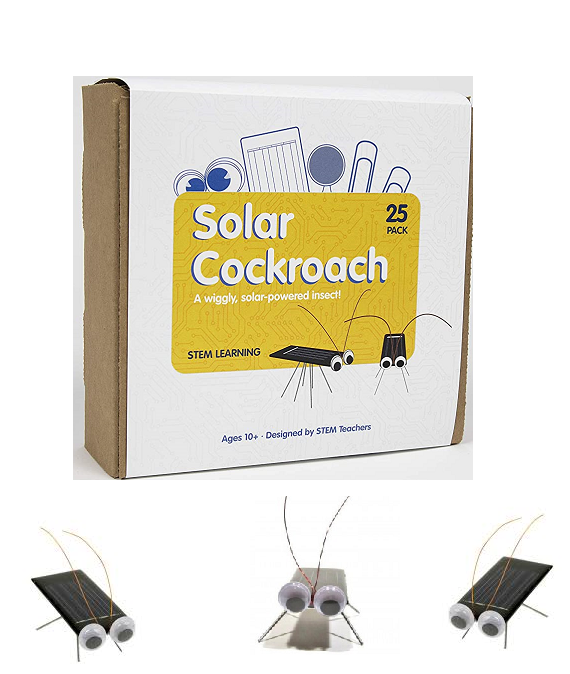
Solar Cockroach - Classroom Set (25 Pack)
Overview
Create a vibrating solar insect in minutes with this fun solar STEM kit.
Our new Solar Bug 2.0 Kit is going to eventually replace this project. It's a bit more kid friendly and the Classroom Set is the same price. We highly recommend that you check it out as most users find it to be a better activity.
The Solar Cockroach is a simple solar activity designed teach kids about solar energy, motion, and engineering. Sunlight directly powers a vibrating motor attached to the underside of the Solar Cockroach, no batteries required. Use this kit as a stand alone activity or as part of a larger solar lesson.
The Solar Cockroach is intended for makers ages 10 and up. There are two different ways to build the Cockroach; either use the included Maker Tape to connect the vibrating motor to the solar cell or use a soldering iron to quickly solder the motor to the solar cell. To complete this project you will need a hot glue gun and a wire cutter. The project takes 10-20 minutes to complete and will never run out of power since the sun is its power source.
Some modern windows are coated with an anti UV layer which will often times prevent the Solar Cockroach from powering the motor. When in doubt have your student go outside in pure direct sunlight.
Warning: Kit includes small parts and batteries. These are a choking hazard. Not intended for children under the age of 10.
Directions, eBooks, Lesson Plans, and Videos
Directions in both English and Spanish can be found on our online Project Database. Print off the directions or watch our step by step video. You can also download our free Solar Cockroach eBook which contains the directions and lesson plans for this activity.
If you plan on using this kit as part of a solar classroom activity try having the student test different types of light sources to see if the solar panel reacts. Typically only the most powerful artificial lights will trigger the solar cell with everything else falling quite short. To expand the lesson have the kits test heat, brightness of light, and solar power generation out of each light source or even have them use a ruler to take readings at different distances from each light source. We recommend using the sun, an LED light bulb, an incandescent light bulb, and a CFL light bulb




